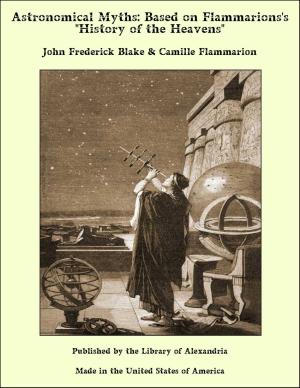Men of the Old Stone Age: Their Environment Life and Art
Nonfiction, Religion & Spirituality, New Age, History, Fiction & Literature| Author: | Henry Fairfield Osborn | ISBN: | 9781465601506 |
| Publisher: | Library of Alexandria | Publication: | March 8, 2015 |
| Imprint: | Language: | English |
| Author: | Henry Fairfield Osborn |
| ISBN: | 9781465601506 |
| Publisher: | Library of Alexandria |
| Publication: | March 8, 2015 |
| Imprint: | |
| Language: | English |
This volume is the outcome of an ever-memorable tour through the country of the men of the Old Stone Age, guided by three of the distinguished archæologists of France, to whom the work is gratefully dedicated. This Palæolithic tour of three weeks, accompanied as it was by a constant flow of conversation and discussion, made a very profound impression, namely, of the very early evolution of the spirit of man, of the close relation between early human environment and industry and the development of mind, of the remote antiquity of the human powers of observation, of discovery, and of invention. It appears that men with faculties and powers like our own, but in the infancy of education and tradition, were living in this region of Europe at least 25,000 years ago. Back of these intelligent races were others, also of eastern origin but in earlier stages of mental development, all pointing to the very remote ancestry of man from earlier mental and physical stages. another great impression from this region is that it is the oldest centre of human habitation of which we have a complete, unbroken record of continuous residence from a period as remote as 100,000 years corresponding with the dawn of human culture, to the hamlets of the modern peasant of France of A. D. 1915. In contrast, Egyptian, Ægean, and Mesopotamian civilizations appear as of yesterday. The history of this region and its people has been developed chiefly through the genius of French archæologists, beginning with Boucher de Perthes. The more recent discoveries, which have come in rapid and almost bewildering succession since the foundation of the Institut de Paléontologie humaine, have been treated in a number of works recently published by some of the experienced archæologists of England, France, and Germany.
This volume is the outcome of an ever-memorable tour through the country of the men of the Old Stone Age, guided by three of the distinguished archæologists of France, to whom the work is gratefully dedicated. This Palæolithic tour of three weeks, accompanied as it was by a constant flow of conversation and discussion, made a very profound impression, namely, of the very early evolution of the spirit of man, of the close relation between early human environment and industry and the development of mind, of the remote antiquity of the human powers of observation, of discovery, and of invention. It appears that men with faculties and powers like our own, but in the infancy of education and tradition, were living in this region of Europe at least 25,000 years ago. Back of these intelligent races were others, also of eastern origin but in earlier stages of mental development, all pointing to the very remote ancestry of man from earlier mental and physical stages. another great impression from this region is that it is the oldest centre of human habitation of which we have a complete, unbroken record of continuous residence from a period as remote as 100,000 years corresponding with the dawn of human culture, to the hamlets of the modern peasant of France of A. D. 1915. In contrast, Egyptian, Ægean, and Mesopotamian civilizations appear as of yesterday. The history of this region and its people has been developed chiefly through the genius of French archæologists, beginning with Boucher de Perthes. The more recent discoveries, which have come in rapid and almost bewildering succession since the foundation of the Institut de Paléontologie humaine, have been treated in a number of works recently published by some of the experienced archæologists of England, France, and Germany.















